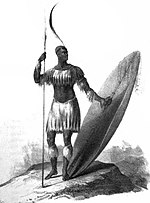
Shaka kaSenzangakhona, also known as Shaka Zulu and Sigidi kaSenzangakhona, was the king of the Zulu Kingdom from 1816 to 1828. One of the most influential monarchs of the Zulu, he ordered wide-reaching reforms that reorganized the military into a formidable force.
Nandi KaBhebhe was a daughter of Bhebhe, a past Elangeni chief and the mother of Shaka kaSenzangakhona, King of the Zulus.

Durban is the third-most populous city in South Africa, after Johannesburg and Cape Town, and the largest city in the province of KwaZulu-Natal. Situated on the east coast of South Africa, on the Natal Bay of the Indian Ocean, Durban is largest port city in sub-saharan Africa and was formerly named Port Natal. North of the harbour and city centre lies the mouth of the Umgeni River; the flat city centre rises to the hills of the Berea on the west; and to the south, running along the coast, is the Bluff. Durban is the seat of the larger eThekwini Metropolitan Municipality, which spans an area of 2,556 km2 (987 sq mi) and had a population of 4.2 million in 2022, making the metropolitan population one of Africa's largest on the Indian Ocean. Within the city limits, Durban's population was 595,061 in 2011. The city has a humid subtropical climate, with hot, wet summers and mild, dry winters.
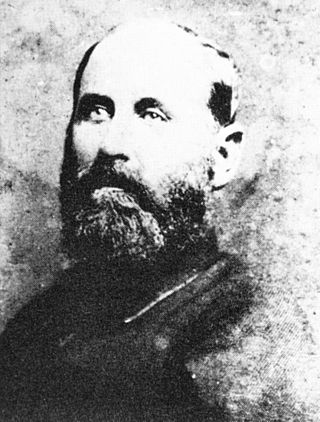
John Robert Dunn was a South African settler, hunter, and diplomat of British descent. Born in Port Alfred in 1834, he spent his childhood in Port Natal/Durban. He was orphaned as a teenager, and lived in native dress on the land near the Tugela River. His conversance with Zulu customs and language allowed his increasing influence among Zulu princes.

The Tugela River is the largest river in KwaZulu-Natal Province, South Africa. With a total length of 560 km (350 mi), and a drop of 1 370 metres in the lower 480 km, it is one of the most important rivers of the country.
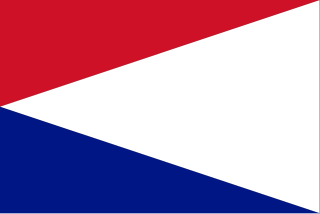
The Natalia Republic was a short-lived Boer republic founded in 1839 after a Voortrekker victory against the Zulus at the Battle of Blood River. The area was previously named Natália by Portuguese sailors, due to its discovery on Christmas. The republic came to an end in 1843 when British forces annexed it to form the Colony of Natal. After the British annexation of the Natalia Republic, most local Voortrekkers trekked northwest into Transorangia, later known as the Orange Free State, and the South African Republic.
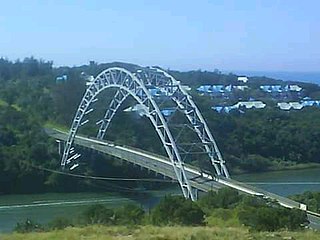
Port Edward is a small resort town situated on the south coast of KwaZulu-Natal in South Africa and lies on the border between KwaZulu-Natal and the Eastern Cape. It is situated on the R61 road between Port Shepstone and Lusikisiki.
Colenso is a town in KwaZulu-Natal, South Africa. It is located on the southern bank of the Tugela River on the R103 road. The original settlement was contained within a loop on the river, but it subsequently expanded southwards and eastwards. It lies on the main Durban - Johannesburg railway line some 190 km (118 mi) north-west of Durban.

Amanzimtoti, locally nicknamed Toti, and officially renamed to eManzimtoti, is a coastal town just south of Durban in KwaZulu-Natal, South Africa. Situated along the Sapphire Coast, the town is well known for its warm climate and numerous beaches, and is a popular tourist destination, particularly with surfers.
Francis George Farewell (1784–1829) was the founder of the Port Natal Colony in South Africa.
Nathaniel Isaacs (1808–1872) was an English adventurer who played a part in the history of Natal, South Africa. He wrote a memoir spread over two volumes called Travels and Adventures in Eastern Africa (1836). This book subsequently became one of the principal sources quoted by writers of the history of Natal, including Morris , Ritter and Bulpin.
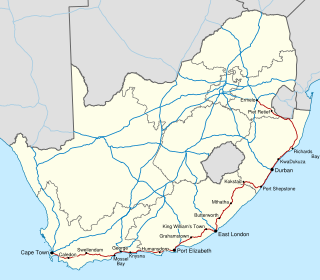
The N2 is a national route in South Africa that runs from Cape Town through George, Gqeberha, East London, Mthatha, Port Shepstone and Durban to Ermelo. It is the main highway along the Indian Ocean coast of the country. Its current length of 2,255 kilometres (1,401 mi) makes it the longest numbered route in South Africa.

Hans Paludan Smith Schreuder was a Norwegian missionary who developed close relationships with the Zulu and British authorities.

The Colony of Natal was a British colony in south-eastern Africa. It was proclaimed a British colony on 4 May 1843 after the British government had annexed the Boer Republic of Natalia, and on 31 May 1910 combined with three other colonies to form the Union of South Africa, as one of its provinces. It is now the KwaZulu-Natal province of South Africa.
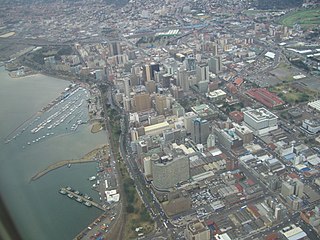
The John Ross House in Durban, South Africa is a 33-storey skyscraper on Victoria Embankment.
Henry Francis Fynn was an English traveler and trader. He was among the first Europeans to make contact with King Shaka. Fynn, Coenraad De Buys, John Dunn and Nathaniel Isaacs were among the most famous of South Africa's so-called White Chiefs.

Langalibalele (isiHlubi: meaning 'The blazing sun', also known as Mthethwa, Mdingi, was king of the amaHlubi, a Bantu tribe in what is the modern-day province of KwaZulu-Natal, South Africa.
Kwa-Bulawayo was the royal kraal of Shaka Zulu, and as such was the capital of the early Zulu Empire. It was founded after Shaka's conquest of the Ndwandwe kingdom, in around 1820. During the conflict, Shaka made a stand outside Kwa-Bulawayo, facing two thousand Ndwande who returned from cattle rustling, in addition to five hundred more who survived the battle at Gqokli.
Sibaya Casino and Entertainment Kingdom is an entertainment complex situated just north of uMhlanga and south-west of eMdloti on the North Coast of KwaZulu-Natal, South Africa.
Mawa kaJama was a Zulu princess who was a prominent opponent of her nephew King Mpande. After Mpande began a purge of his opponents in June 1843, Mawa fled with up to 50,000 refugees to the British Colony of Natal, significantly depopulating the southern portion of the Zulu Kingdom. After negotiating a treaty with the British, she established and led a permanent settlement on the Umvoti River.

